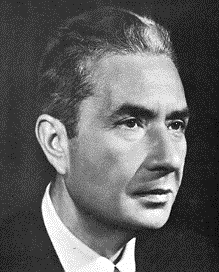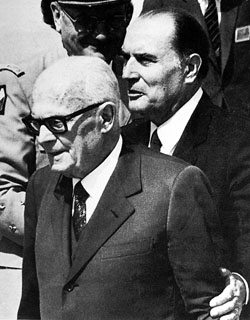
Aldo Romeo Luigi Moro was an Italian statesman and a prominent member of the Christian Democracy (DC). He served as 38th prime minister of Italy from December 1963 to June 1968 and then from November 1974 to July 1976.

Law enforcement in Italy is centralized on a national level, carried out by multiple national forces, helped by few limited local agencies. The Italian law enforcement system is considered complex, with multiple police forces and other agencies taking part in different duties. According to Italian system, as "policing" we can refer to the duties of "full-powered officers" coming from the three national main forces: Polizia di Stato, Carabinieri and, even if generally active in specific fields, Guardia di Finanza. While these three corps' duties spaces from investigating, preventing to arresting, other local forces carry out restricted and limited duties and will always subjected to the main ones.

The Bologna massacre was a terrorist bombing of the Bologna Centrale railway station in Bologna, Italy, on the morning of 2 August 1980, which killed 85 people and wounded over 200. Several members of the neo-fascist terrorist organization Nuclei Armati Rivoluzionari were sentenced for the bombing, although the group denied involvement.

The Mitterrand doctrine was a policy established in 1985 by socialist French president François Mitterrand concerning Italian far-left terrorists who fled to France: those convicted for violent acts in Italy, but excluding "active, actual, bloody terrorism" during the "Years of Lead", would not be extradited to Italy. The Mitterrand doctrine was effectively repealed in 2002, under the government of Jean-Pierre Raffarin during the presidency of Jacques Chirac, when Paolo Persichetti was extradited from France.

The Years of Lead is a term used for a period of social and political turmoil in Italy that lasted from the late 1960s until the late 1980s, marked by a wave of both far-left and far-right incidents of political terrorism.

Luigi Calabresi was an Italian police officer and State Police official in Milan. His murder triggered an escalation of the Years of Lead.
Girolamo Minervini, born in Molfetta, Italy, was an Italian magistrate who was assassinated by the Red Brigades on March 18, 1980.
Prima Linea was an Italian left-wing terrorist group, active in the country from the late 1970s until the early 1980s.
The Train 904 bombing was a terror attack which occurred on 23 December 1984, in the Apennine Base Tunnel. A bomb on the 904 express train from Naples to Milan was detonated, killing 16 and wounding 266. The bombing location was near the location of the Italicus Express bombing ten years previously.
Fulvio Croce, was an Italian lawyer, President of the Turin Bar Association, who was killed by the terrorist association Red Brigades.

The kidnapping and murder of Aldo Moro, also referred to in Italy as Moro Case, was a seminal event in Italian political history.

Carlo Donat-Cattin was an Italian politician and trade unionist. A member of Christian Democracy, he was several times minister of the Italian Republic. He was leader of the internal left current of the DC Forza Nuove.

The Red Brigades was a far-left armed organization and guerrilla group based in Italy responsible for numerous violent incidents, including the abduction and murder of former Prime Minister Aldo Moro, during the Years of Lead.
Carlo Casalegno was an Italian journalist and writer. He was killed by a group of four terrorists belonging to the Red Brigades; he was the first journalist ever to be killed during the Years of lead.
Walter Tobagi was an Italian journalist and writer. He was killed in a terrorist attack by the Brigade XXVIII March, a left-wing terrorist group.

Eugenio Soncini was an Italian architect.
Alessandro Alibrandi was an Italian neofascist terrorist who was active in the organization Nuclei Armati Rivoluzionari. He was killed during a firefight with the police in Rome.
Lorenzo "Renzo" Chierici was an Italian Fascist official, prefect and soldier, who served as Commander of the Forestry Militia from December 1941 to April 1943 and Chief of the Italian Police from April to July 1943.

The murder of Francesco Di Cataldo was committed in Milan, Italy, on 20 April 1978 by the Red Brigades.
Giuseppe Mariani was an Italian dermatologist and medical researcher.










